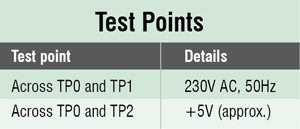
 This handy remote control tester responds to the signal received from any infrared hand-piece (IR remote control).
This handy remote control tester responds to the signal received from any infrared hand-piece (IR remote control).
Circuit and working
Fig. 1 shows the circuit diagram of the remote control tester. It is built around infrared (IR) receiver module TSOP1738 (IRRX1), a pnp transistor BC557 (T1) and some other components. A buzzer (optional) can be used at the output for audio indication.
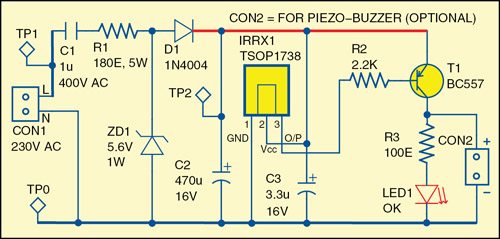
The power supply for the TSOP1738 and transistor BC557 is derived directly from 230V AC, 50Hz mains supply via capacitor C1 and limiting resistor R1. The 5.6V zener diode, 1N4004 diode and filter capacitor C2 provide about 5V DC supply for the circuit.
For testing, point the IR remote towards TSOP1738 and press any of its keys. On doing this, LED1 will blink and the buzzer (if connected) will produce sound, which means your IR remote is working fine.
Construction and testing
A single-side PCB for the remote control tester is shown in Fig. 2 and its component layout in Fig. 3. After assembling the circuit on PCB, enclose it in a suitable plastic case.
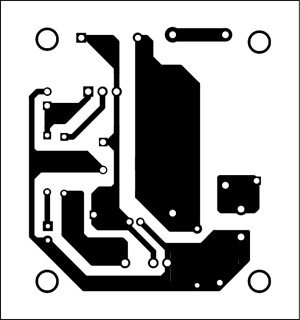
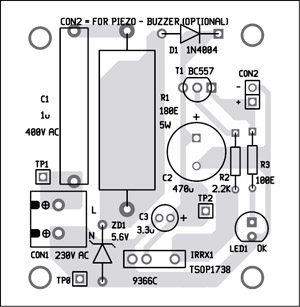
Download PCB and component layout PDFs: click here
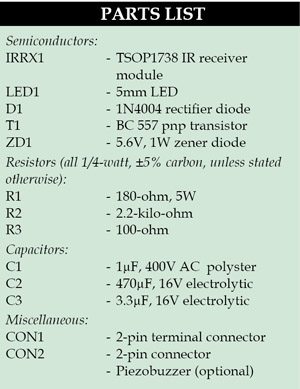 Use 2-pin connector CON1 for mains power supply. CON2 is used for connecting the piezo-buzzer, which is optional.
Use 2-pin connector CON1 for mains power supply. CON2 is used for connecting the piezo-buzzer, which is optional.
Solder TSOP1738 on the PCB and cut a hole on the cabinet for it so that the IR rays transmitted from the remote fall on it easily. If you encounter any problem with the circuit, verify the test points given in the table.
Since the circuit is directly powered by 230V AC supply, there is a risk of electric shock. So enclose it in a proper plastic case to isolate the circuit from the user.
Caution
The circuit operates off live AC mains, so there is a risk of electrical hazards. Take necessary safety precautions while building this circuit.
The author is a regular contributor to EFY








